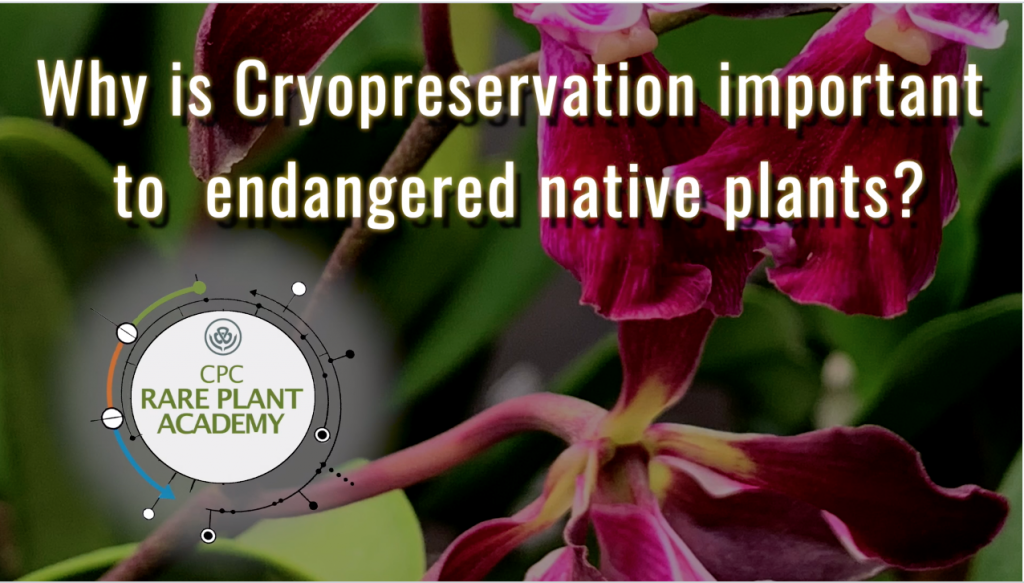
Cryopreservation, a method of storing tissues in liquid nitrogen, is becoming increasingly important to rare plant conservation. This is because many plant species, including large groups such as oaks, orchids, and bryophytes, are unable to be stored long term using more traditional seed banking methods. Using cryopreservation techniques, researchers are able to preserve greater crop […]
Read More…
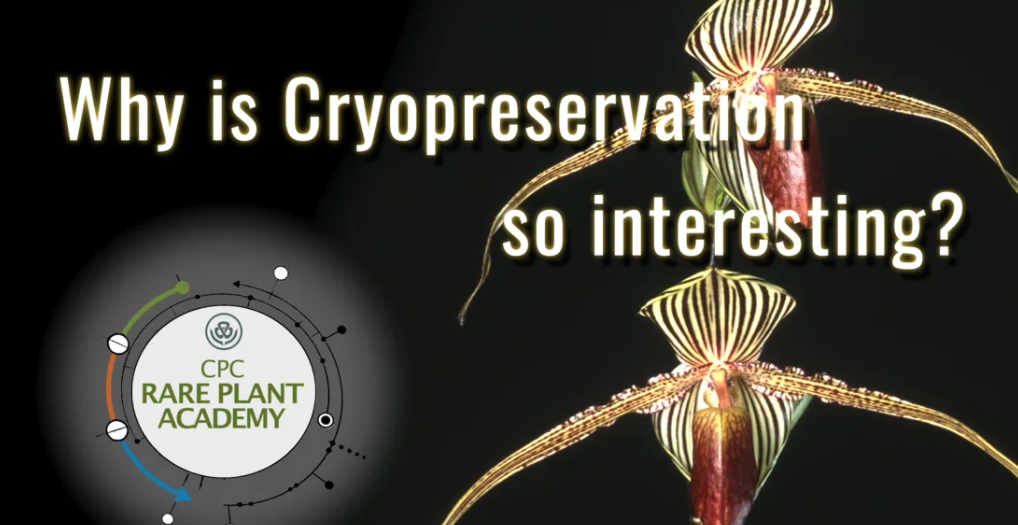
Plant Conservationists have found that many plants are unable to be stored using traditional seed banking techniques. To address this issue, researchers are exploring the use of cryopreservation, the storing of tissues in liquid nitrogen, to preserve exceptional species. In this video scientists Daniela Impe, Christina Walters, and Karin Van Der Walt explain how they […]
Read More…
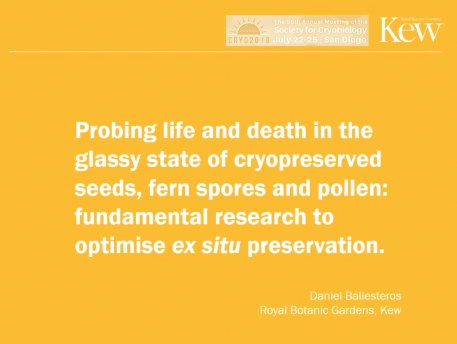
Dani Ballesteros, Christina Walters, Hugh W. Pritchard Royal Botanic Gardens Kew, Wellcome Trust Millennium Building, United Kingdom, United States Department of Agriculture., United States Often various plant propagules (e.g., seeds, pollen and fern spores) can be stored dry (or partially dry) at sub-zero temperatures for extended periods of time. Under such conditions the cell cytoplasm […]
Read More…
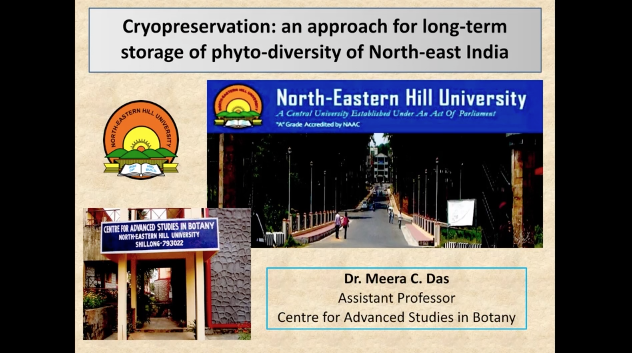
Meera Das*, Reema Diengdoh, Seram Devika, Suman Kumaria, North-Eastern Hill University, Shillong, India, *Speaker North-east India, being one of the global hot-spots, is considered the richest reservoir of diverse plant genetic resources. However, the vast utilities of plant species in medicines, ornamentals, fragrances, urbanization and illegitimate harvest of plant genetic resources have immense impact on […]
Read More…
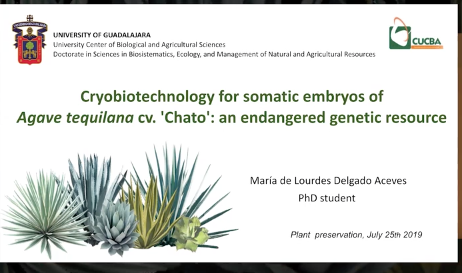
Lourdes Delgado-Aceves, Maria T. Gonzalez- Arnao, Liberato Portillo, Raquel Folgado, CUCBA-University of Guadalajara, University of Veracruz, The Huntington Library, Art Collections and Botanical Gardens Agave tequilana cv. chato is an important resource widely used to produce a very emblematic and popular Mexican beverage called mezcal; however, its wild populations are currently severely degraded due to […]
Read More…
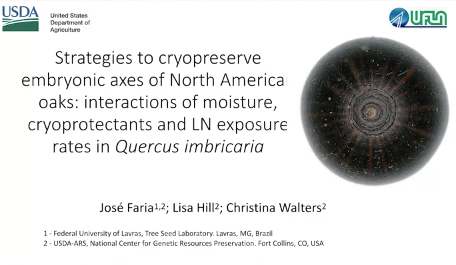
Jose Faria, Lisa Hill, Christina Walters, Tree Seed Laboratory, Federal University of Lavras, Brazil, USDA-ARS, National Center for Genetic Resources Preservation, United States Quercus imbricaria is included in the red oak group (Lobatae) and is broadly distributed in the Midwestern US. The embryonic axes are about 1 mg dry mass and have 0.68 g H2O/g […]
Read More…
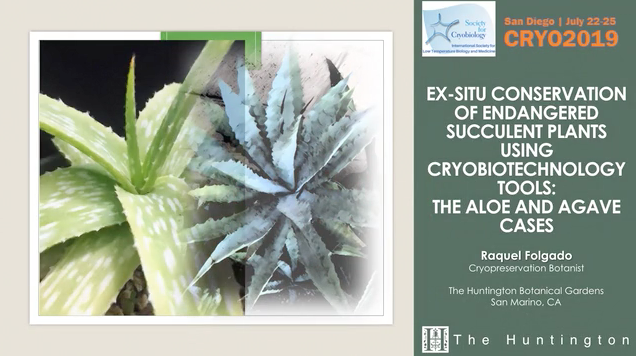
Josette Tin, Taylor La Val, Sean Lahmeyer, John Trager, Raquel Folgado*, The Huntington Library, Art Collections and Botanical Gardens, San Marino, CA., United States, *Speaker Succulent plants are significant to the horticultural industry, and they are also sources for food, fibers, medicines, and cosmetics. The main threats for the wild population of these often emblematic […]
Read More…
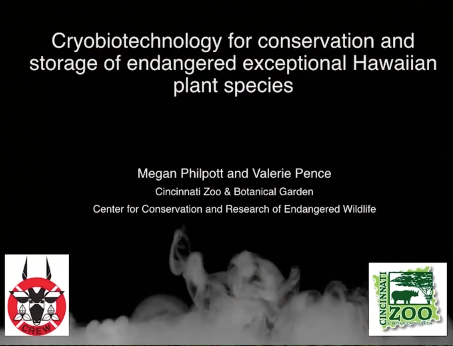
Megan Philpott, Valerie PenceL*, Cincinnati Zoo & Botanical Garden, United States *Speaker Threats to global plant biodiversity compel the need for ex situ collections of species worldwide. However, the subset of species known as exceptional plants are often overlooked. These species produce few or no seeds or produce recalcitrant seeds. The Center for Conservation and […]
Read More…
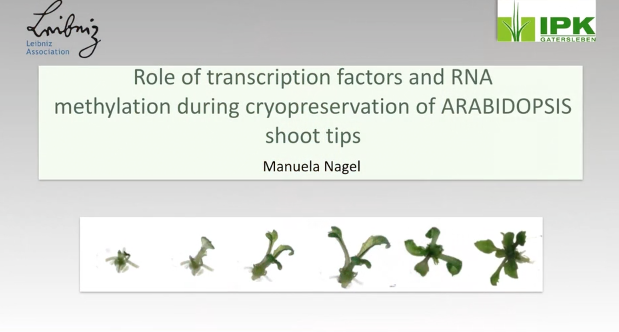
Manuela Nagel, Hans-Peter Mock, Markus Kuhlmann, Johanna Stock Leibniz Institute of Plant Genetics and Crop Plant Research (IPK), Germany Plant cryopreservation is a back-up approach for vegetatively propagated genetic resources. The cryopreservation process represents a model for complex stress response mechanisms. During cryopreservation, meristematic tissues have to cope with several stresses including mechanical, osmotic and […]
Read More…
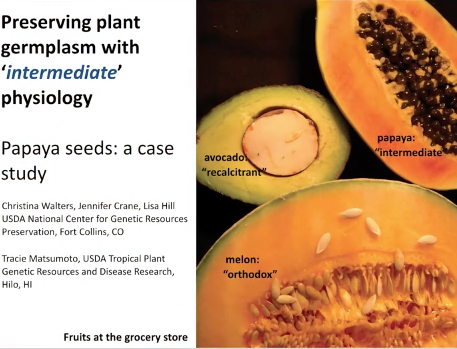
Christina Walters, Jennifer Crane, Lisa Hill, United States Department of Agriculture., USDA-ARS Seeds of papaya (Carica papaya) are tolerant to desiccation, but they are quickly damaged when stored at -5 to -20C. The seeds have a high lipid content that reflect “tropical oils,” which are high in saturated and mono-unsaturated fatty acids. Differential Scanning Calorimetry […]
Read More…
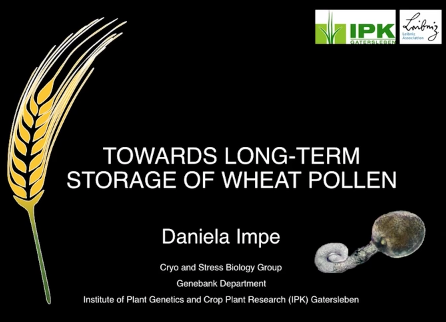
Daniela Impe, Daniel Ballesteros, Till Ischebeck, Claudia Köpnick, Hardy Rolletschek, Michael Melzer, Manuela Nagel, Leibniz Institute of Plant Genetics and Crop Plant Research (IPK) Germany, Royal Botanic Gardens, Kew, United Kingdom, Department of Plant Biochemistry, Georg-August University Göttingen, Germany Cryopreservation of pollen is used to preserve and exchange nuclear genes of plant genetic resources and to […]
Read More…
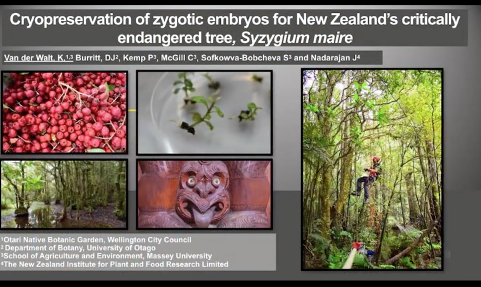
Karin Van Der Walt, Jayanthi Nadarajan, David J Burritt, Peter Kemp, Otari Native Botanic Garden – Wellington City Council & Massey University New Zealand, The New Zealand Institute for Plant and Food Research Limited, University of Otago, Massey University The pandemic pathogen, Myrtle Rust(Austropuccinia psidii) was discovered in New Zealand in 2017 and has now […]
Read More…
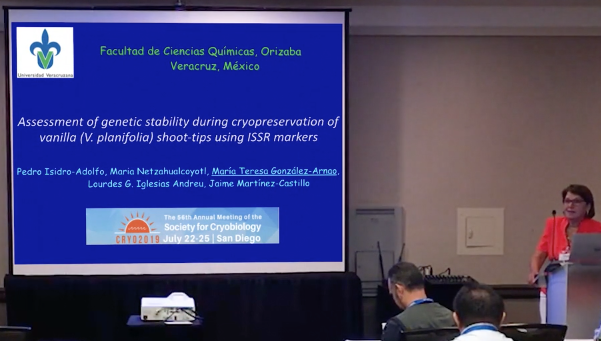
Maria Teresa Gonzalez-Arnao, Pedro Isidro-Adolfo, Maria F. NetzahualcoyotlMata, Lourdes G. Iglesias Andreu, Jaime Martínez-Castillo, University of Veracruz, INBIOTECA, CICY, In this study we used six selected ISSR primers (T05, T06, C07, UBC823, UBC825, UBC848) to evaluate the genetic stability during cryopreservation of vanilla (V. planifolia) shoot-tips subjected to a Droplet-Vitrification (D-V) protocol using PVS2 solution for dehydration. We […]
Read More…
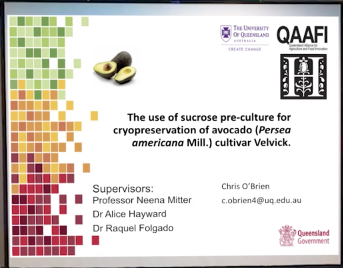
Chris O’Brien, Jayeni Hiti Bandaralage, Raquel Folgado, Sean Lahmeyer, Alice Hayward, Neena Mitter Queensland Alliance for Agriculture and Food Innovation, The University of Queensland, Australia The Huntington Library, Art Collections and Botanical Gardens, San Marino, CA., United States Australia’s avocado industry is worth over ~$557 million and produces more than 77,000t. The genetic diversity of […]
Read More…
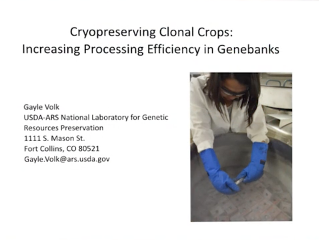
Gayle Volk, USDA ARS National Laboratory for Genetic Resources Preservation, United States The USDA-ARS National Plant Germplasm System has over 30,000 clonally maintained accessions within its field, screenhouse, greenhouse, and tissue culture collections. These fruit, nut, tuber, and bulb crop collections are usually not duplicated at secondary locations and are vulnerable to biotic, abiotic, and climatic threats. Only about 15% of […]
Read More…
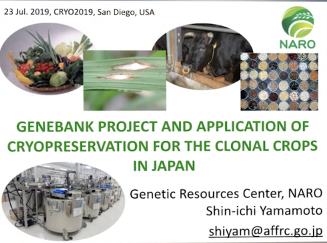
Shin-Ichi Yamamoto, Genetic Resources Center, National Agriculture and Food Research Organization (NARO) The National Agriculture and Food Research Organization (NARO) conducts Genebank Project for collecting, conserving, evaluating, multiplying and distributing plants (228,198 accessions), microorganisms (35,407 acc.), animals (1,971 acc.) and DNA materials (394,440 clones) related to agriculture since 1985. The Genetic Resources Center, NARO (NGRC) coordinates […]
Read More…
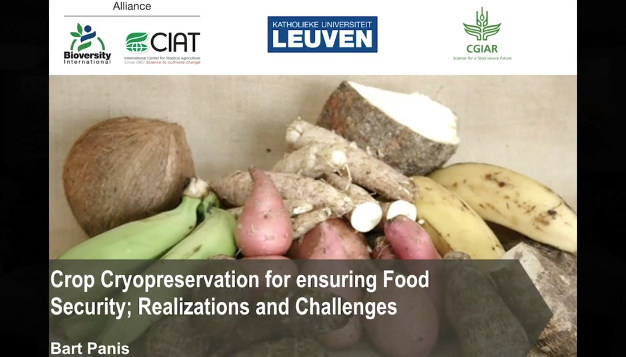
Bart Panis, Bioversity International, Belgium More than 800 million people are undernourished and 200 million children under five years of age are underweight. Moreover, the world’s population is expected to reach 10,500 million by 2050. Reliable and sustainable improvements in yield will thus be needed to meet the demands of this growing population. The availability […]
Read More…
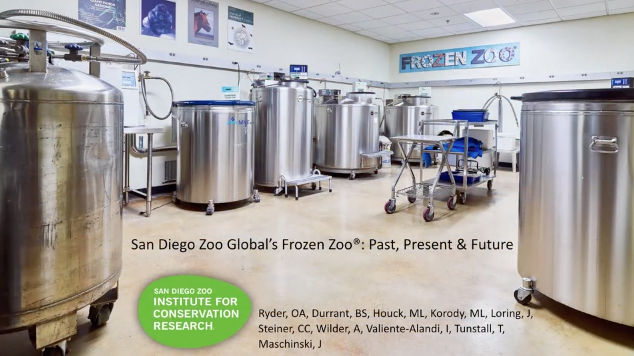
Dr. Oliver Ryder, Barbara Durrant, Marlys L. Houck, Marisa Korody, Cynthia Steiner, Institute for Conservation Research, San Diego Zoo Global Cryobanking of viable tissue culture cells at the San Diego Zoo, named the “Frozen Zoo® by its founder, Kurt Benirschke, has contributed knowledge advancing conservation science and species recovery from its beginnings in 1975. This […]
Read More…

















